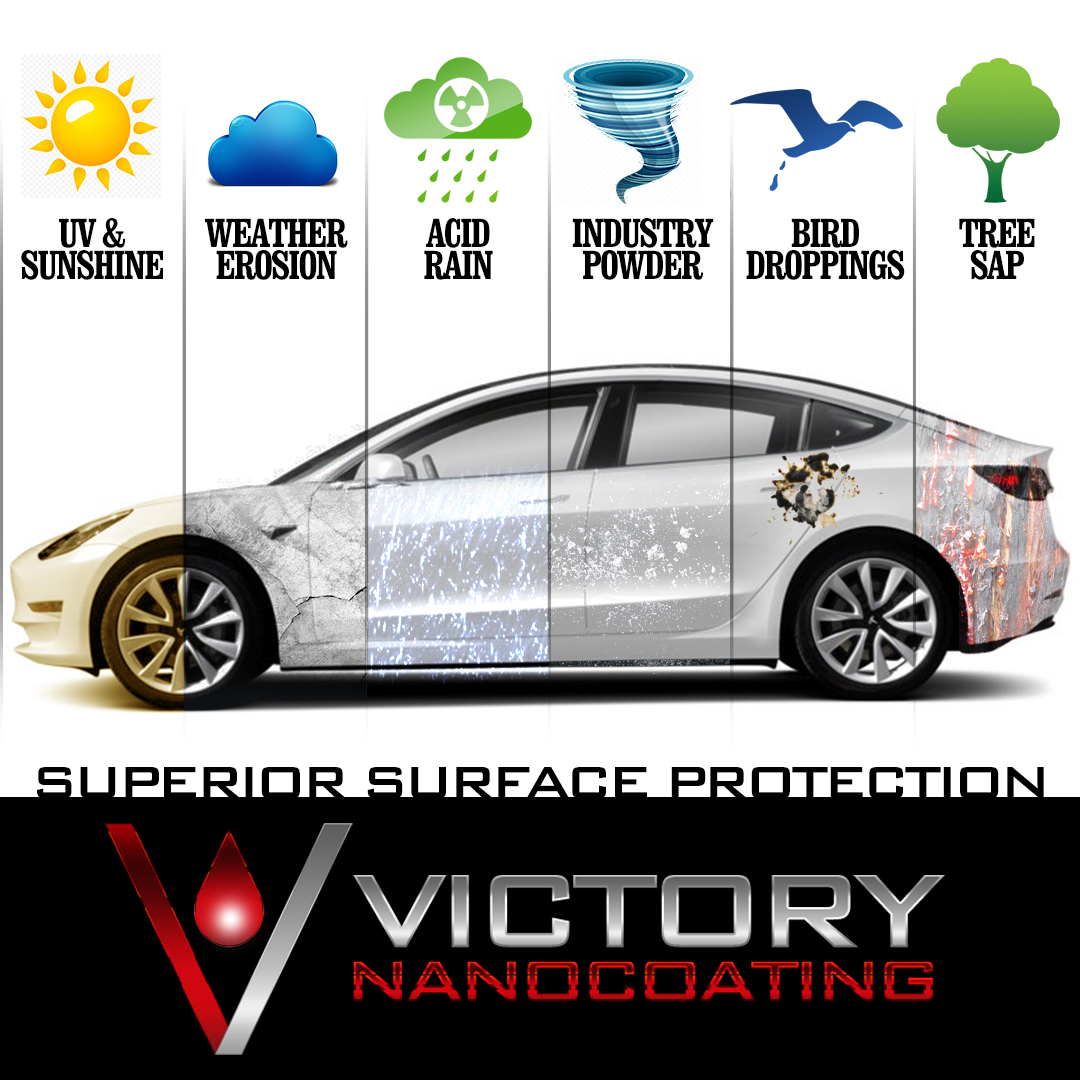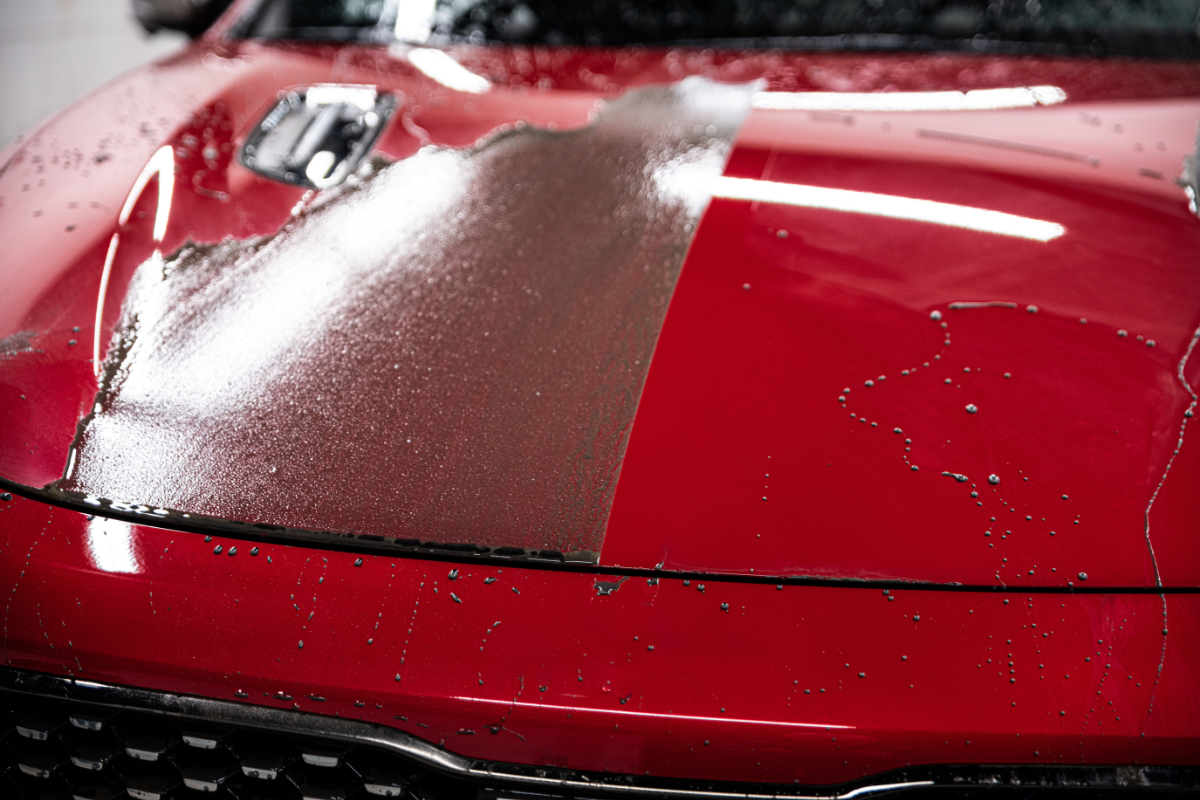Ceramic Coating: The Ultimate Remedy for Protecting Your Automobile's Shine
Ceramic Coating: The Ultimate Remedy for Protecting Your Automobile's Shine
Blog Article
Exploring the Science Behind Ceramic Coating and Its Influence On Car Outlining
The application of ceramic coating in vehicle detailing stands for a considerable improvement in automobile care, rooted in its sophisticated chemical residential or commercial properties, mainly silica dioxide and titanium dioxide. As we check out the complexities of the application process and the lasting implications for automobile maintenance, it becomes clear that the selection of ceramic coating can fundamentally change one's strategy to automobile treatment.
What Is Ceramic Finishing?
Ceramic covering is a modern remedy that has acquired popularity in the auto detailing market for its capability to provide resilient defense for car surface areas. This advanced protective layer is typically made up of silica dioxide (SiO2), which creates a solid bond with the vehicle's paint, producing a resilient shield against environmental pollutants. Unlike traditional wax or sealants, ceramic layers provide remarkable resistance to UV rays, chemical spots, and physical abrasions.
The application of ceramic covering includes a thorough process, where the automobile's surface area is thoroughly cleansed and sanitized prior to the coating is applied (Ceramic Coating). Once healed, the coating enhances the vehicle's gloss, depth, and clarity, offering a showroom-quality finish that lasts for many years. One of the essential advantages of ceramic covering is its hydrophobic properties, which push back water and dirt, making maintenance much easier and decreasing the regularity of washes
The Chemistry of Ceramic Finish
An essential element of ceramic finishing exists in its chemical make-up, mostly identified by the visibility of silica dioxide (SiO2) This compound is important to the formation of a resilient, protective layer that bonds chemically to the vehicle's surface. When used, the SiO2 molecules go through a process called polymerization, where they form a network of interconnected structures. This causes a robust, hydrophobic surface area that wards off water and impurities.
In addition to SiO2, many ceramic layers integrate titanium dioxide (TiO2) and other additives to boost their efficiency attributes. TiO2, for circumstances, adds to increased firmness and chemical resistance. The interaction between these compounds creates a special molecular structure that uses a high level of protection versus environmental variables such as UV rays, acid rainfall, and oxidation.
Moreover, the application process commonly includes a careful prep work of the surface to ensure optimal adhesion of the layer. This chemistry not only makes sure a long-lasting coating however likewise enhances the aesthetic charm of the car. Understanding the detailed chemistry behind ceramic layers is necessary for describing experts that intend to provide superior security and long life for their customers' automobiles.
Benefits of Ceramic Layer
While detailing specialists typically highlight the benefits of ceramic finishes, their advantages extend much beyond looks. Ceramic finishes develop a hydrophobic surface that fends off dirt, water, and gunk, substantially lowering the regularity of laundries and the effort required to preserve a car's look.
In addition, ceramic finishings improve the long life of the vehicle's surface. Unlike standard waxes or sealers, which may last a few months, ceramic coatings can endure for years, giving a long-lasting remedy for auto treatment. This resilience translates to cost financial savings, as owners are less likely to require regular reapplication.
Furthermore, ceramic coatings are immune to chemical discolorations and etching, which can occur from acidic compounds like bird droppings or tree sap. This resistance not just maintains the lorry's visual appeals however likewise reduces potential damage - Ceramic Coating. Overall, the financial investment in ceramic layer uses cars and truck owners a significant return in terms of defense, ease of upkeep, and resilient aesthetic appeal, making it a progressively prominent selection in the realm of automotive describing
Application Refine Described

Once the surface is appropriately prepared, the ceramic covering can be used. Making use of an applicator pad, the specialist applies the layer in tiny areas, functioning in a crosshatch pattern to make next page sure also insurance coverage.
When treated, the ceramic finishing forms a solid bond with the paint, providing improved security and a glossy coating. Appropriate application is vital to make the most of the long life and efficiency of the ceramic coating.

Lasting Effect on Car Care
The lasting influence of ceramic layer on car treatment is considerable, as it essentially modifies just how owners keep their automobiles. By developing a durable, hydrophobic layer on the automobile's surface, ceramic coverings decrease the adherence of dirt, crud, and impurities. This property minimizes the frequency of washing called for, ultimately preserving water and cleaning items.
In Addition, the UV defense used by ceramic coverings aids to stop oxidation and fading of the automobile's paint, maintaining its aesthetic allure and resale value with time - Ceramic Coating. This protective obstacle additionally reduces the possibility of scrapes and swirl marks, which are usual concerns in traditional paint surfaces
Additionally, ceramic coverings help with much easier maintenance, permitting proprietors to cleanse their vehicles with minimal initiative. The smooth surface makes it challenging for pollutants to bond, making it possible for less complex elimination during regular cleansing.
Over time, the investment in ceramic coating may bring about cost financial savings in car care services and products. In general, the enduring benefits of ceramic coverings not only enhance the appearance of cars yet likewise add to a more effective and YOURURL.com lasting approach to vehicle maintenance.
Verdict
In conclusion, the application of ceramic coating stands for a considerable improvement in automobile detailing, driven by its one-of-a-kind chemical composition of silica dioxide and titanium dioxide. This modern technology not only enhances the aesthetic appeal of cars however likewise supplies robust protection against environmental dangers and use. The lasting advantages, consisting of minimized upkeep frequency and improved resilience, underscore the worth of ceramic coatings as an essential financial investment for keeping automobile appearance and integrity over time.

Report this page